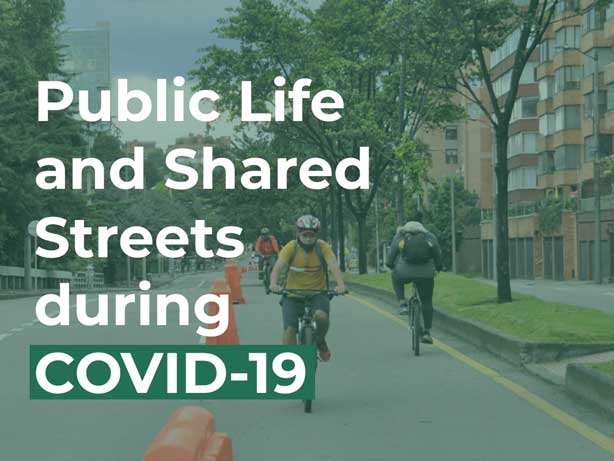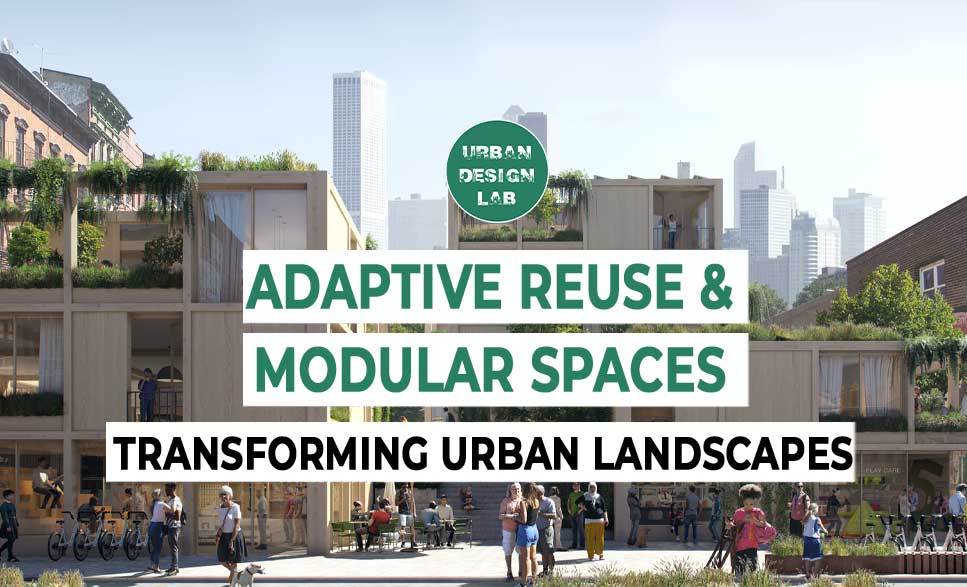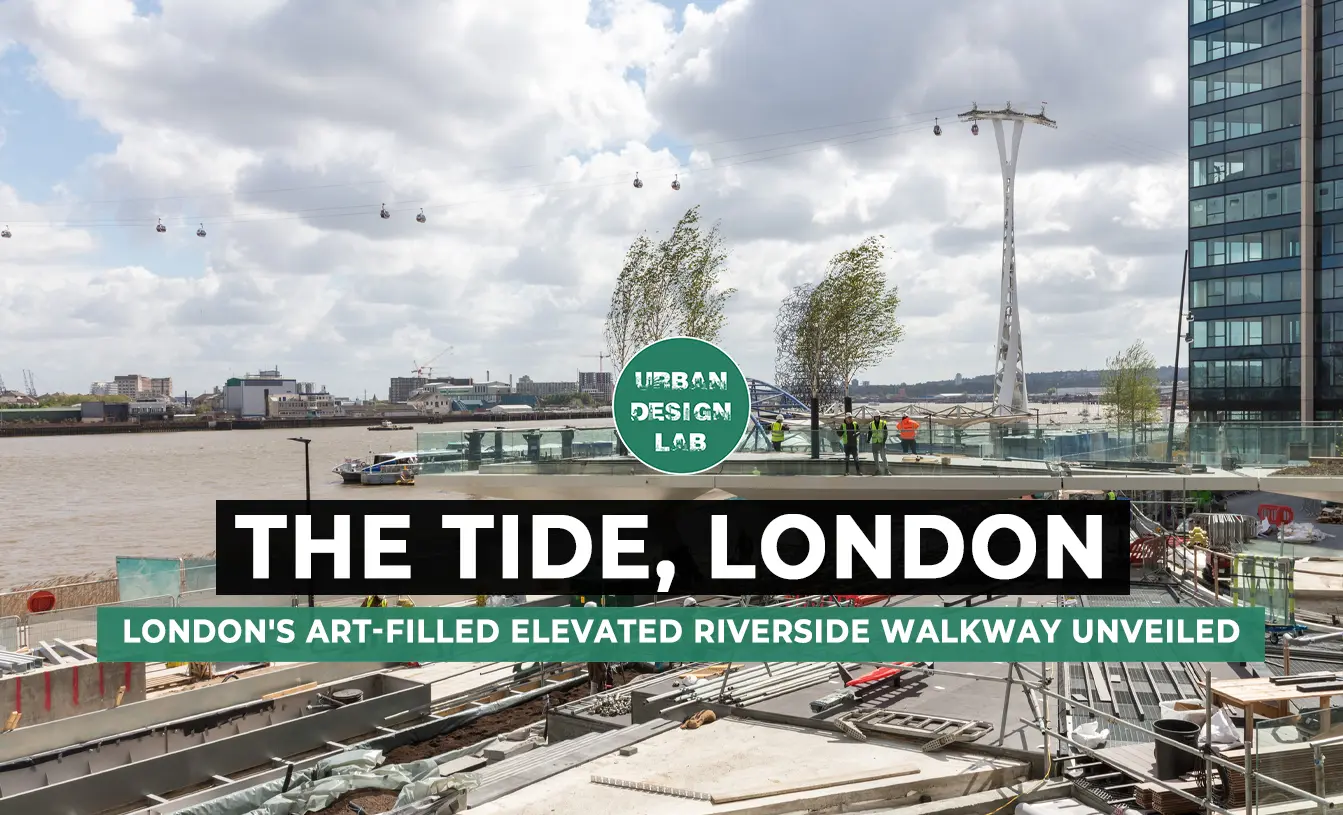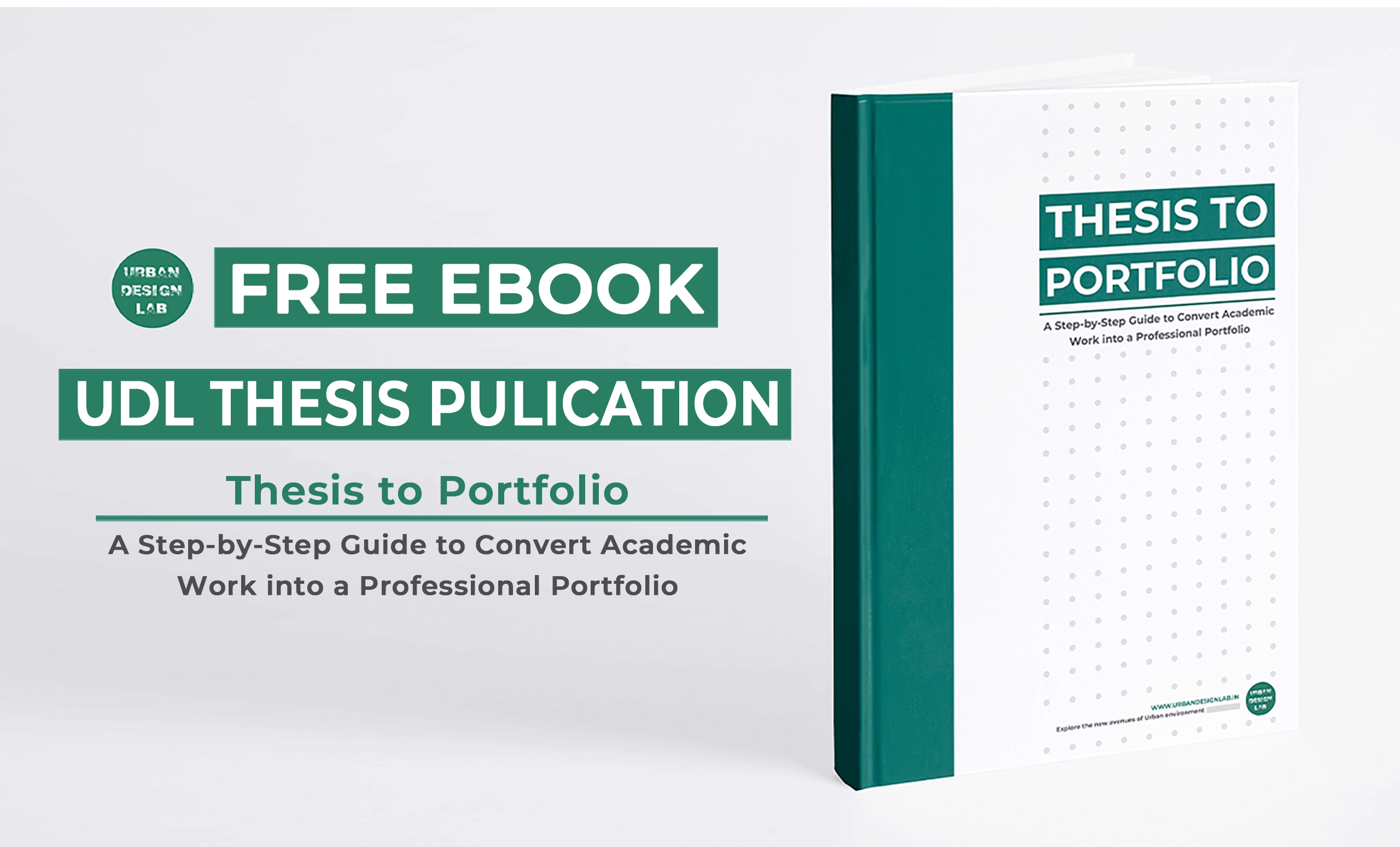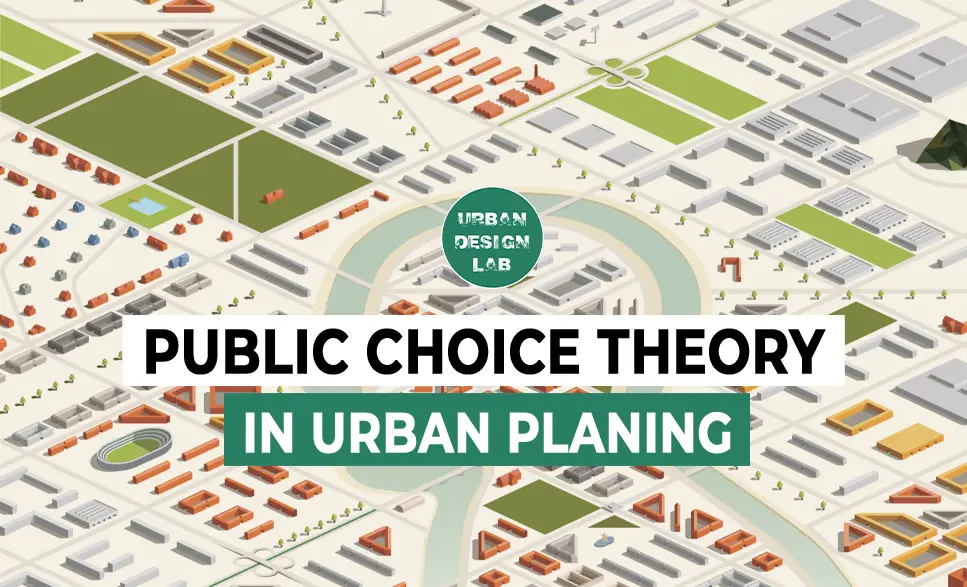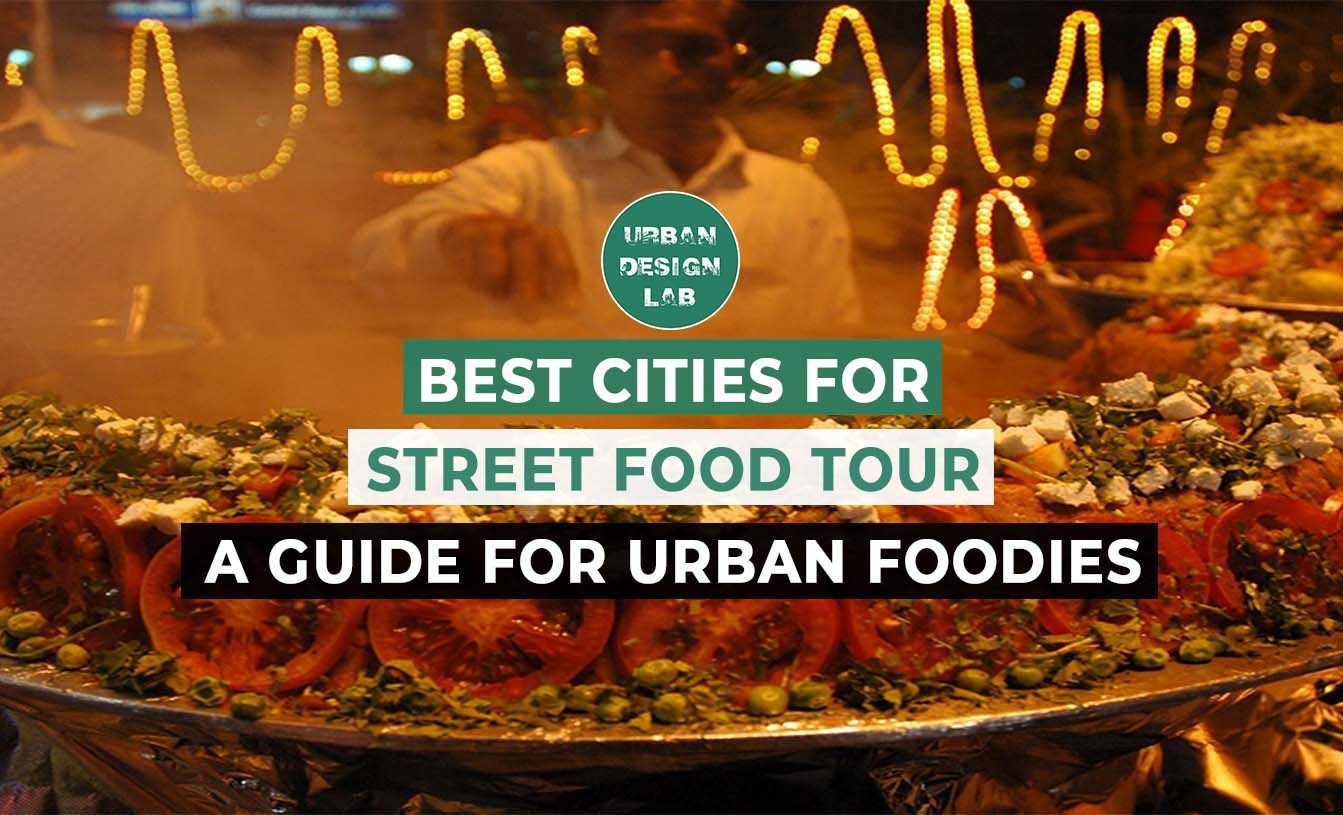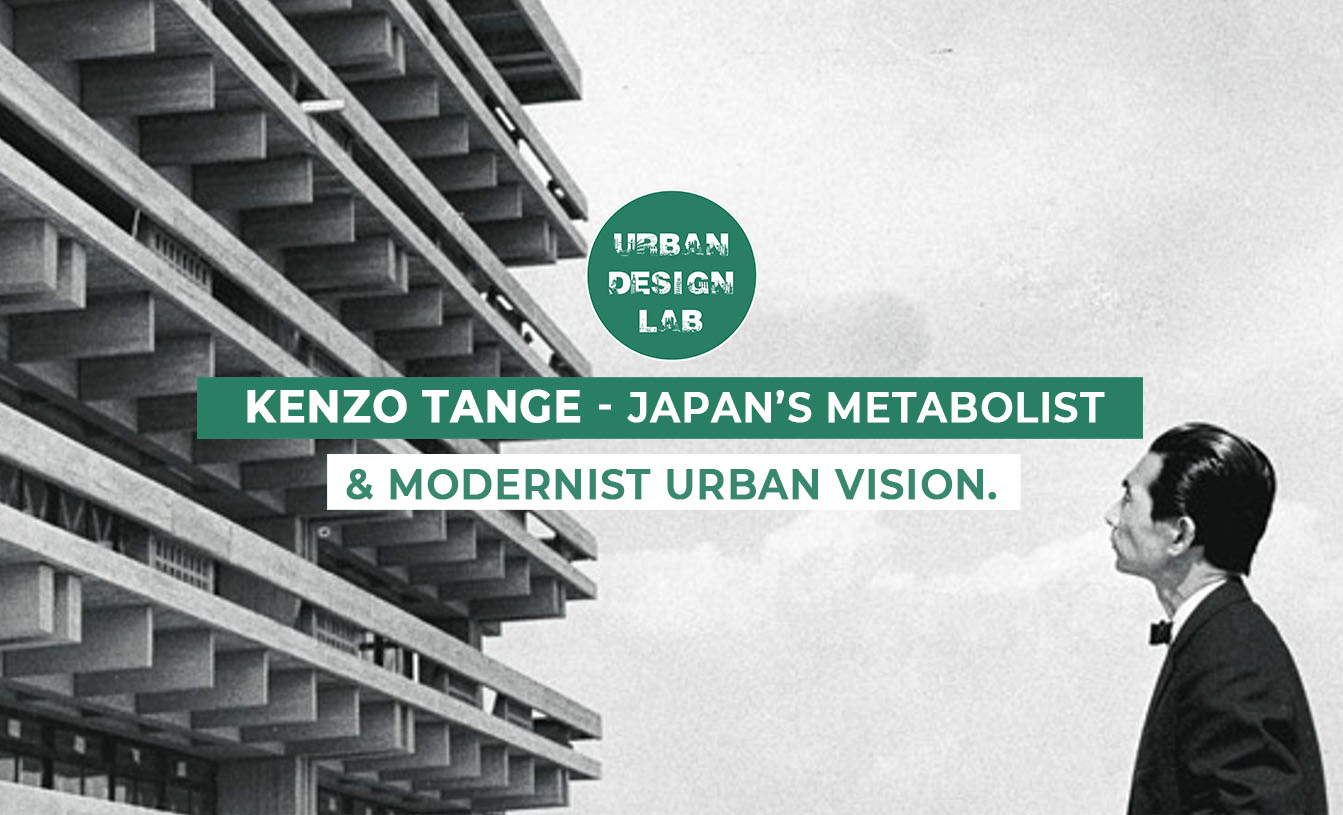
Ferial Garden, Port Said: A Public Space in Egypt’s Coastal City
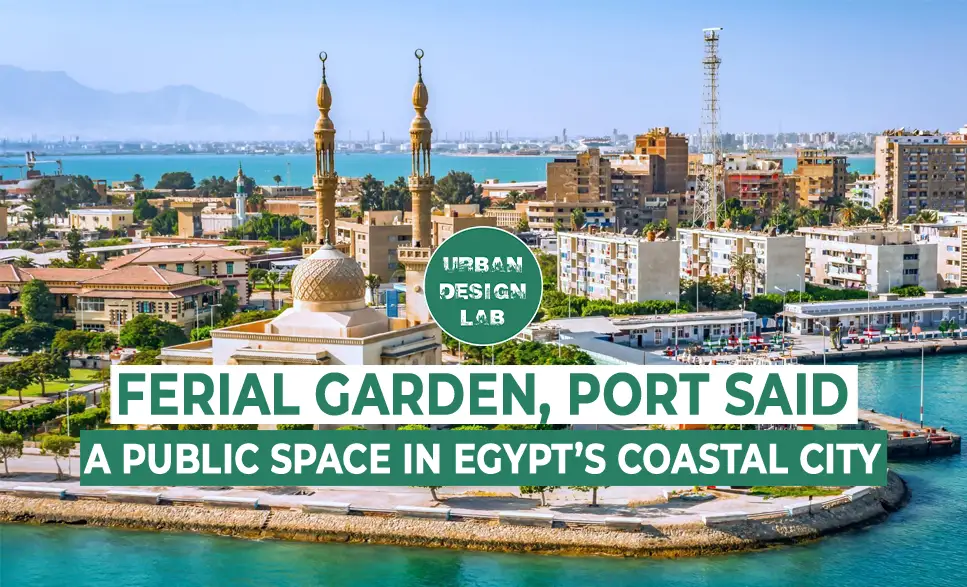
Ferial Garden, a vibrant public space nestled within Port Said, Egypt, offers a serene escape for locals and visitors alike. This documentary article delves into the public life of Ferial Garden. By employing observation techniques and drawing insights from space syntax theory, the study explores the garden’s usage, activities, and spatial configuration. The article highlights the garden’s role as a community gathering place, fostering social interaction and offering a diverse range of activities for residents. It also examines the garden’s spatial design and its impact on accessibility and inclusivity. Through this analysis, the article provides valuable insights into the potential of public spaces to enhance quality of life and foster community engagement.
Insights into Ferial Garden’s Location and Context
Nestled in the heart of Port Said, Ferial Garden is a testament to the city’s rich history dating back to 1869. Located in the Al-Sharq district, this public space covers an area of approximately 21,904 square meters. Surrounded by a mix of land uses, including institutional, commercial, educational, residential and mixed-use buildings, Ferial Garden offers a refreshing respite from the city’s bustling atmosphere.
The garden’s prime location at the intersection of the city’s main boulevards ensures excellent connectivity to the broader transportation network, making it easily accessible to residents and visitors. Its coastal location provides a welcome break from the inland heat, with cooler temperatures and gentle breezes. This strategic positioning has contributed to Ferial Garden’s status as a major tourist attraction, drawing visitors to its panoramic views of the Suez Canal and its history as a gathering place for distinguished guests throughout the years.
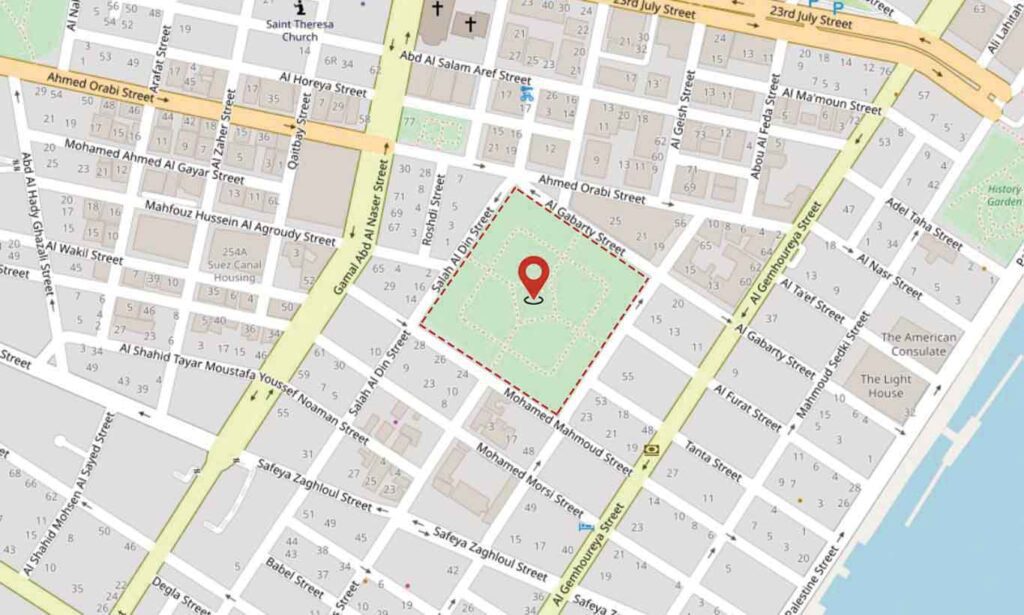
Ferial Garden: A Historic Public Space in Port Said
Ferial Garden, named after Princess Ferial, King Farouk’s eldest daughter, was opened on the same day as the Suez Canal in 1869. Its strategic location near this global trade waterway has attracted notable figures throughout history. Empress Eugenie of France and Emperor Franz Joseph of Austria are among the distinguished guests who have visited the garden. Over the years, Ferial Garden has welcomed other notable individuals, including Khedive Ismail, Ferdinand de Lesseps, and Prince Omar Toussoun. Unfortunately, years of neglect led to the garden’s deterioration, causing concern among locals who valued its historical significance. In response, the Port Said governorate initiated a restoration project, transforming Ferial Garden into a model for its “Gardens without Fences” initiative.
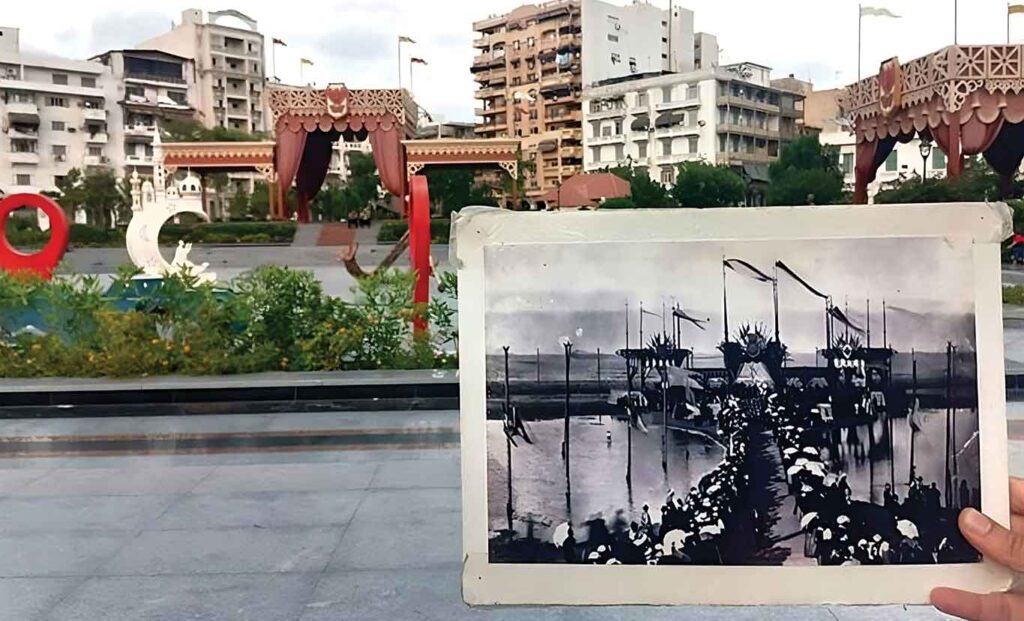
Source: Website Link
Ferial Garden: Urban Design Highlights
Ferial Garden showcases a harmonious blend of natural and man-made elements. Lush green spaces, including lawns, flower beds, and tree-lined avenues, create a serene atmosphere. Well-maintained walkways encourage visitors to explore the garden’s beauty. Public art, such as sculptures, adds a cultural dimension and enhances the aesthetic appeal. Seating areas, including benches and shading elements, offer visitors opportunities to relax and enjoy the surroundings. Levels create a type of amazement and dynamic visual connectivity, so people can see diverse vistas from various angles. Accessibility features, such as ramps and accessible restrooms, ensure that everyone can enjoy the garden. Appropriate lighting enhances the ambiance and ensures safety, especially during evening hours. These urban design elements combine to create a welcoming and enjoyable public space within the city.
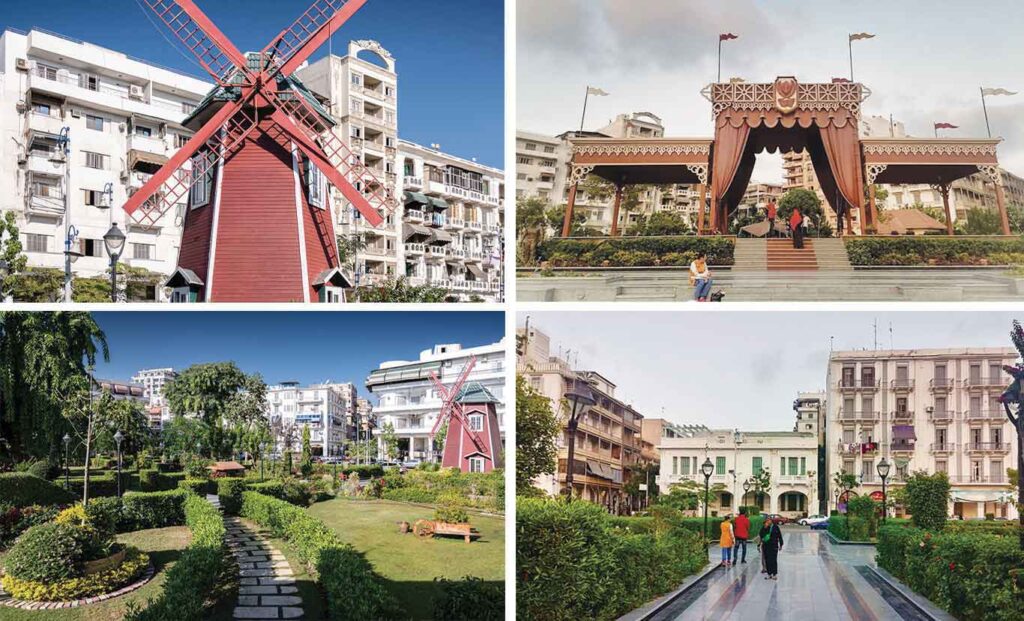
Understanding Public Life in Ferial Garden: A Mixed-Methods Approach
To gain a deeper understanding of Ferial Garden’s public life, we employed a variety of observation techniques. Inspired by Jan Gehl and Birgitte Svarre’s “How to Study Public Life,” we conducted systematic observations, counting people, mapping their movements, tracing activities, and tracking patterns of use. This allowed us to document the garden’s vitality and diversity. By asking questions such as “What,” “Where,” “How,” and “Who,” we were able to identify the key characteristics and dynamics of the space. In addition to observational methods, we utilized “Introduction to Space Syntax in Urban Studies” by Akkelies van Nes and Claudia Yamu to analyze the garden’s spatial configuration and accessibility. Space syntax theory helped us understand accessibility, connectivity and how the arrangement of spaces within the garden influenced human behavior and interaction.
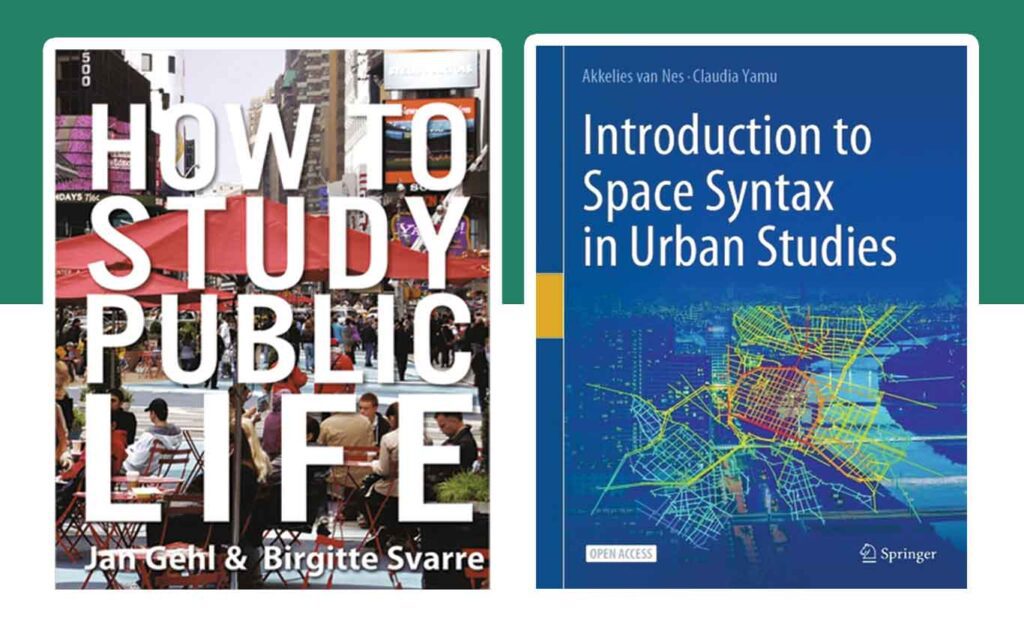
Source: author
Observing Public Life in Ferial Garden: A Gehl-Svarre Approach
To gain a deeper understanding of public life in Ferial Garden, Gehl-Svarre’s observation techniques from “How to Study Public Life” were applied. This method began with asking key questions like “How many,” which involved counting the number of people entering and exiting at various times of the day. This revealed that peak usage occurred in the late afternoon and early evening, particularly between 4:00 PM and 7:00 PM, as people often visit to relax, socialize, and enjoy the cooler temperatures. The next question, “How fast,” revealed that people moved slowly within the garden due to its hierarchical paths, surprise elements, and varying levels, all contributing to a sense of amazement. When asking “Who,” it was observed that the garden was primarily frequented by women, often gathering with friends and accompanied by their children. “Where,” involved tracing and tracking visitors’ walkways, which revealed high foot traffic at entrances, exits, and pathways, with bottlenecks at path intersections. Finally, “What,” mapped visitors’ activities such as studying, playing, singing, eating, acting, walking, or sitting, identifying the garden’s primary functions. The study also highlighted a partial degree of enclosure, with wide open areas compared to the surrounding heights, influencing people interaction with the space.
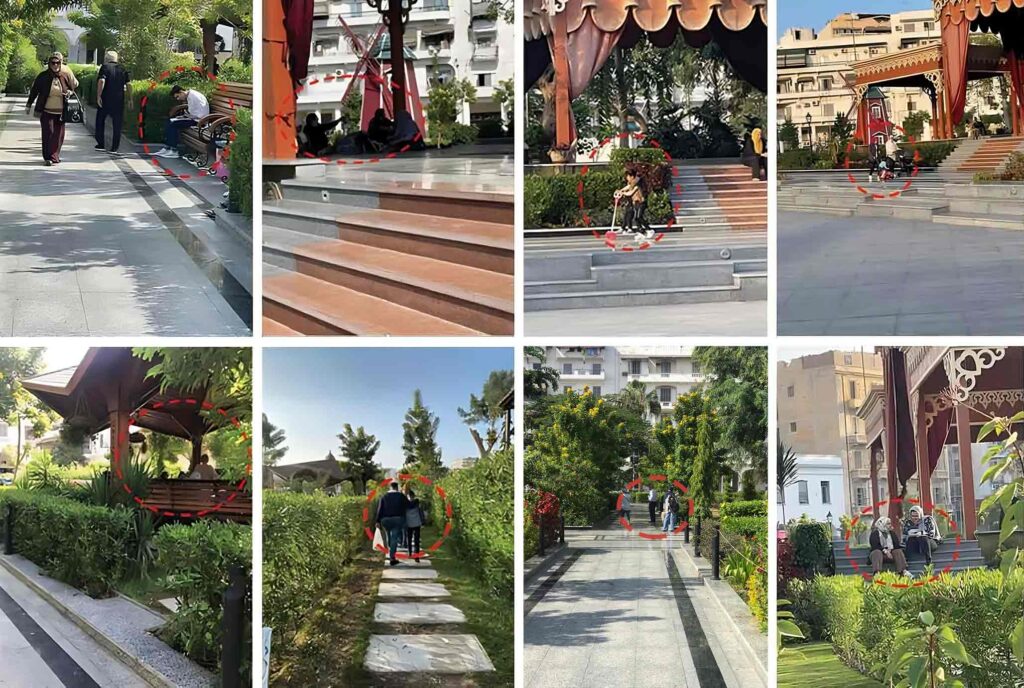
Source: author
Spatial Configuration and Accessibility Analysis of Ferial Garden
To study the spatial configuration and accessibility of Ferial Garden, the Space Syntax analysis approach outlined by Akkelies van Nes and Claudia Yamu in their “Introduction to Space Syntax in Urban Studies” was applied. By examining the relationships between different spaces within the garden, we gained insights into how people navigate and interact with the environment. This analysis helped identify areas of high connectivity and dead-end paths. Our Space Syntax analysis revealed that the most frequented areas were located in the center of the garden. However, our observations suggested that this might be counterintuitive, as there are currently no attractive facilities or shading elements in the center. Understanding the spatial dynamics of the garden allows making informed decisions about its future development and ensure that it remains a welcoming and accessible public space for all.
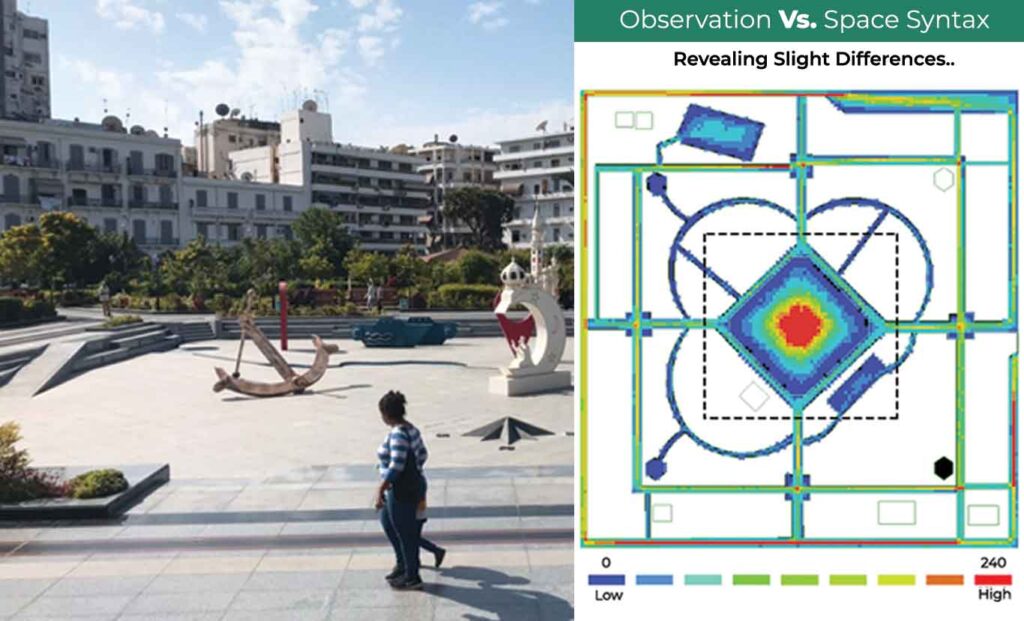
Source: author
-1
-1
-1
-1
Conclusion
Ferial Garden, a vibrant public space in Port Said, Egypt, offers a harmonious blend of nature, culture, and community. Through careful planning and design, the garden has become a beloved destination for locals and visitors alike. By understanding the spatial dynamics of the garden and addressing its challenges, we can ensure that it continues to thrive as a valuable public space for generations to come. Ferial Garden serves as a potential testament to the power of urban planning to create vibrant and inclusive communities.
References
- Noshokaty, A. (2022, September 10). Stabene: Preserving the rich history of Port Said. Ahram Online. https://english.ahram.org.eg/News/475641.aspx
- Abdullatif, K. (2023, May 29). Princess Feryal’s Garden: Vantage Point Over Port Said. Scene Home. https://scenehome.com/Architecture/Princess-Feryal-s-Garden-Vantage-Point-Over-Port-Said
- OpenStreetMap. (2024). OpenStreetMap map. Retrieved August 21, 2024, from https://www.osmap.us/#17/31.26512/32.30959
- Gehl, J., & Svarre, B. (2013). How to study public life. Island Press.
- Van Nes, A., & Yamu, C. (2021). Introduction to space syntax in urban studies. Springer.

Reem Farghaly
About the Author
Reem Farghaly is an enthusiastic architect who graduated in 2023 from the Arab Academy for Science, Technology and Maritime Transport. She commenced her postgraduate studies the same year, driven by a strong passion for research and reading. Reem is particularly interested in urban design and architecture. Keen on gaining knowledge within the field, she is committed to exploring innovative solutions and advancing her expertise in architectural design and sustainability.
Related articles


Architecture Professional Degree Delisting: Explained

Periodic Table for Urban Design and Planning Elements


History of Urban Planning in India

Kim Dovey: Leading Theories on Informal Cities and Urban Assemblage
UDL GIS
Masterclass
Gis Made Easy- Learn to Map, Analyse and Transform Urban Futures
Session Dates
15th-19th December 2025

Urban Design Lab
Be the part of our Network
Stay updated on workshops, design tools, and calls for collaboration
Curating the best graduate thesis project globally!

Free E-Book
From thesis to Portfolio
A Guide to Convert Academic Work into a Professional Portfolio”
Recent Posts
- Article Posted:
- Article Posted:
- Article Posted:
- Article Posted:
- Article Posted:
- Article Posted:
- Article Posted:
- Article Posted:
- Article Posted:
- Article Posted:
- Article Posted:
- Article Posted:
- Article Posted:
- Article Posted:
Sign up for our Newsletter
“Let’s explore the new avenues of Urban environment together “

























